Introduction
In an era where efficiency and precision are paramount, software automation has emerged as a pivotal force in transforming business operations. This article delves into the essential concepts of software automation, illustrating how leveraging advanced tools and technologies can streamline repetitive processes, enhance productivity, and reduce human error. It explores various types of automation, including Robotic Process Automation (RPA) and AI-powered test automation, highlighting their roles in optimizing workflows and accelerating software development.
Additionally, the article discusses the profound benefits of automation, such as significant cost savings, improved compliance, and the shift towards more strategic tasks. However, it also addresses the challenges and limitations, such as employee resistance and the risks of over-automation, while providing real-world examples of successful implementation across different sectors. Finally, the article looks forward to the future of software automation, driven by artificial intelligence and machine learning, and how these technologies promise to further revolutionize industries by making processes smarter and more efficient.
Key Concepts of Software Automation
Software mechanization leverages technology to perform activities with minimal human involvement, employing a variety of tools and methods to simplify repetitive processes, improve efficiency, and reduce human error. This technological advancement focuses on refining operational workflows by automating routine activities, allowing teams to concentrate on strategic and value-adding tasks.
Automation offers consistency and accuracy, providing reliable results and eliminating the risk of human error. For instance, Louvre Hotels Group, through collaboration with RobosizeME, significantly enhanced its rate code maintenance process, saving 188 hours per month on rate code headers and 386 hours per month on rate code details. Similarly, Xavo’s advanced AI for lab automation has accelerated scientific discovery by improving sample management, materials, and workflow efficiency.
‘Continuous Integration and Continuous Delivery (CI/CD) solutions such as Jenkins, CircleCI, and GitLab, along with version control systems like Git, are crucial for optimizing the software development lifecycle.’. Configuration management solutions such as Puppet, Chef, and Ansible ensure consistency and reliability, with Ansible’s simplicity and agentless architecture making it particularly effective.
The strategic emphasis on mechanization frees the workforce from repetitive duties, enhancing morale and fostering innovation and development. Companies utilizing AI tools have reported completing tasks 30% faster on average, highlighting the substantial positive impact on development speed and efficiency. Furthermore, the industrial control services market is expected to expand from $147.06 billion in 2019 to $264.69 billion by 2026, highlighting the increasing significance of mechanization in today’s competitive environment.
In conclusion, the trajectory towards workflow automation is not just a trend; it is a strategic move towards smarter, more efficient business practices. Automation is becoming a necessity for organizations navigating the complexities of the modern business environment, ensuring they remain competitive and future-ready.
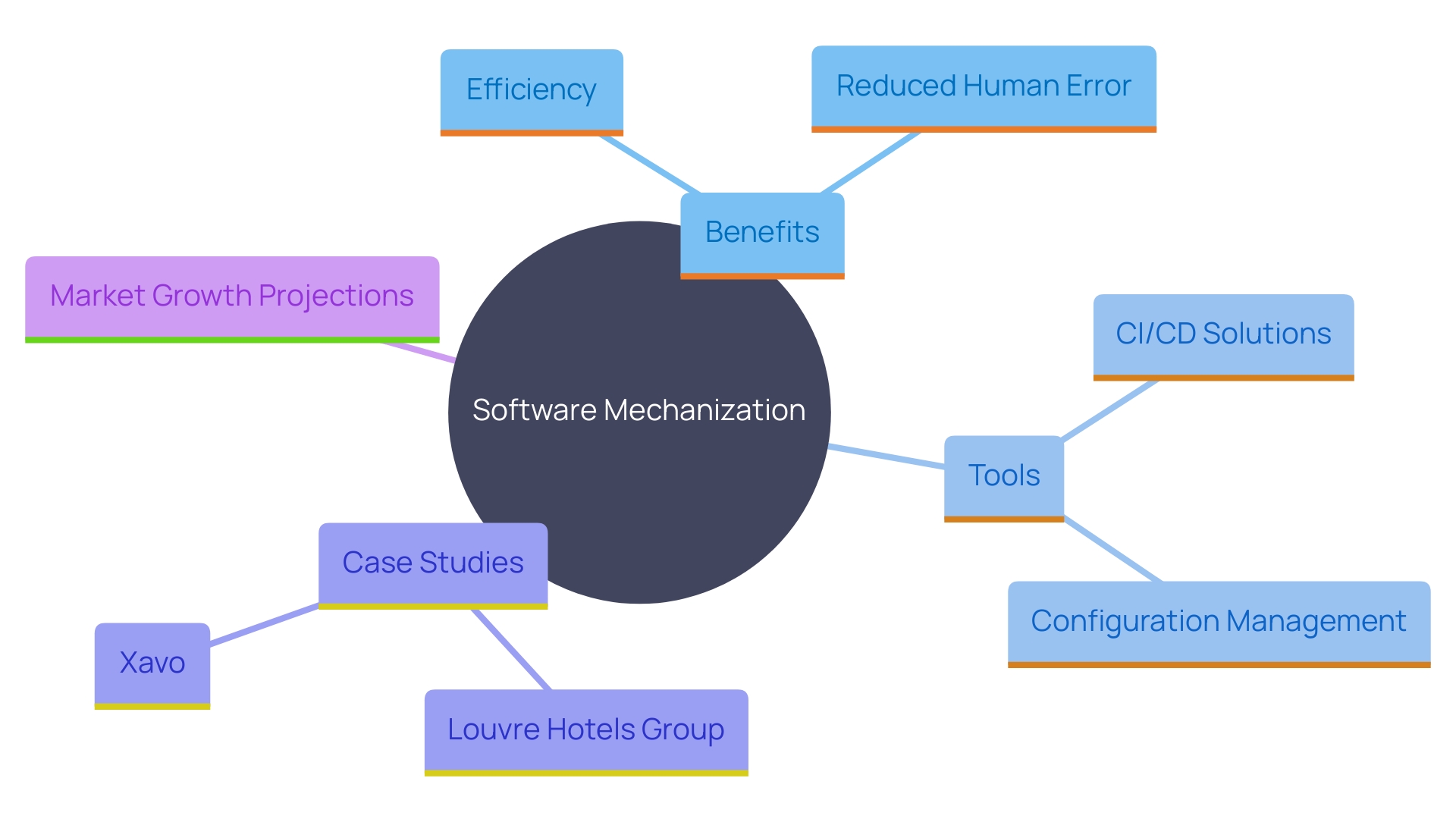
Types of Software Automation
Automation tools have become indispensable in today’s business landscape. Robotic Process Automation (RPA) is a prominent example, deploying software robots to handle rule-based activities across various applications, significantly reducing manual workload. By emulating human actions, RPA bots streamline processes such as data entry and transaction processing, enhancing overall efficiency.
In the realm of software development, test mechanization is crucial. Integrating AI into testing with Natural Language Processing (NLP) ensures that requirements and test cases are thoroughly analyzed, overcoming the limitations of traditional methods. AI-driven solutions automate repetitive tasks such as test execution and result analysis, speeding up the delivery of high-quality software.
Workflow management solutions provide an additional level of effectiveness by handling intricate procedures and approvals effortlessly. No-code platforms, with their user-friendly drag-and-drop interfaces, enable users to develop workflows without prior coding experience, linking to various data sources such as databases and APIs. These tools help companies streamline workflows, make better use of data, and save both time and money.
The adoption of mechanization technologies is a game-changer for businesses aiming to boost productivity and operational efficiency. However, it’s essential to address potential challenges, such as resistance to change and implementation costs, to fully realize the advantages of mechanization.
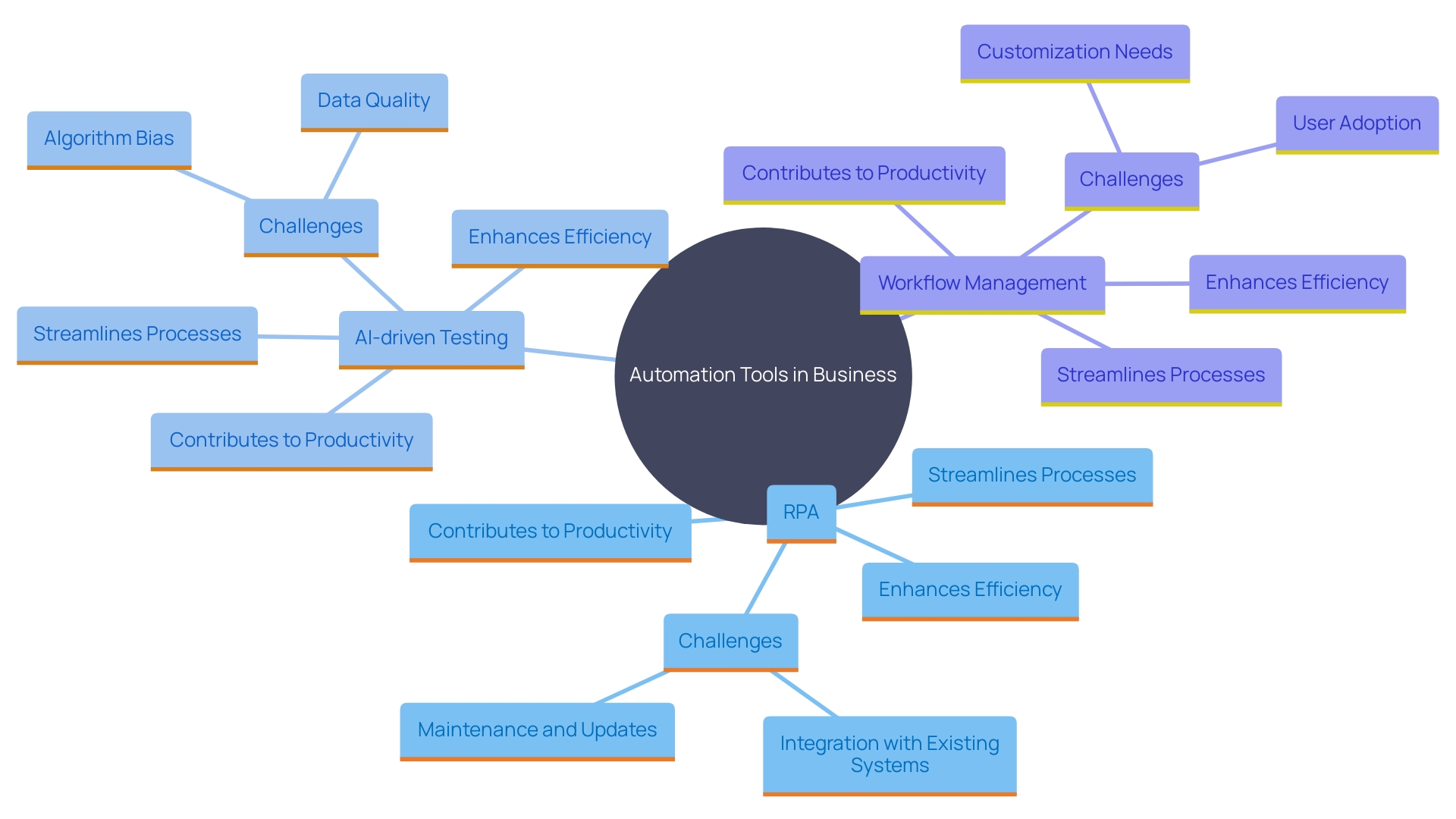
Benefits of Software Automation
The advantages of software mechanization are extensive and transformative across various industries. By automating routine tasks, organizations can significantly enhance productivity, completing tasks faster and with greater accuracy. This shift allows employees to focus on higher-level initiatives that drive innovation and growth, a change that is crucial as 69% of all managerial work is projected to be automated by 2024. The economic benefits are substantial as well. Automation leads to considerable cost savings through streamlined processes and improved resource allocation.
Furthermore, mechanization aids in preserving consistency and adherence throughout processes by reducing human mistakes. A study by Forrester Consulting highlighted that companies adopting AI-augmented testing processes experienced substantial cost savings and return on investment, dispelling the notion that software testing is merely a cost center. Furthermore, automated systems are becoming progressively essential in areas like laboratory processes, where advanced AI innovations are transforming workflows, resulting in quicker and more effective data analysis.
The execution of mechanization technology also addresses concerns about job displacement by emphasizing the importance of upskilling and reskilling initiatives. Embracing education and training helps individuals adapt to new roles, aligning with the changing job market. As mechanization continues to expand, with the market anticipated to increase from $147.06 billion in 2019 to $264.69 billion by 2026, its role in transforming business operations and driving economic growth becomes ever more critical.
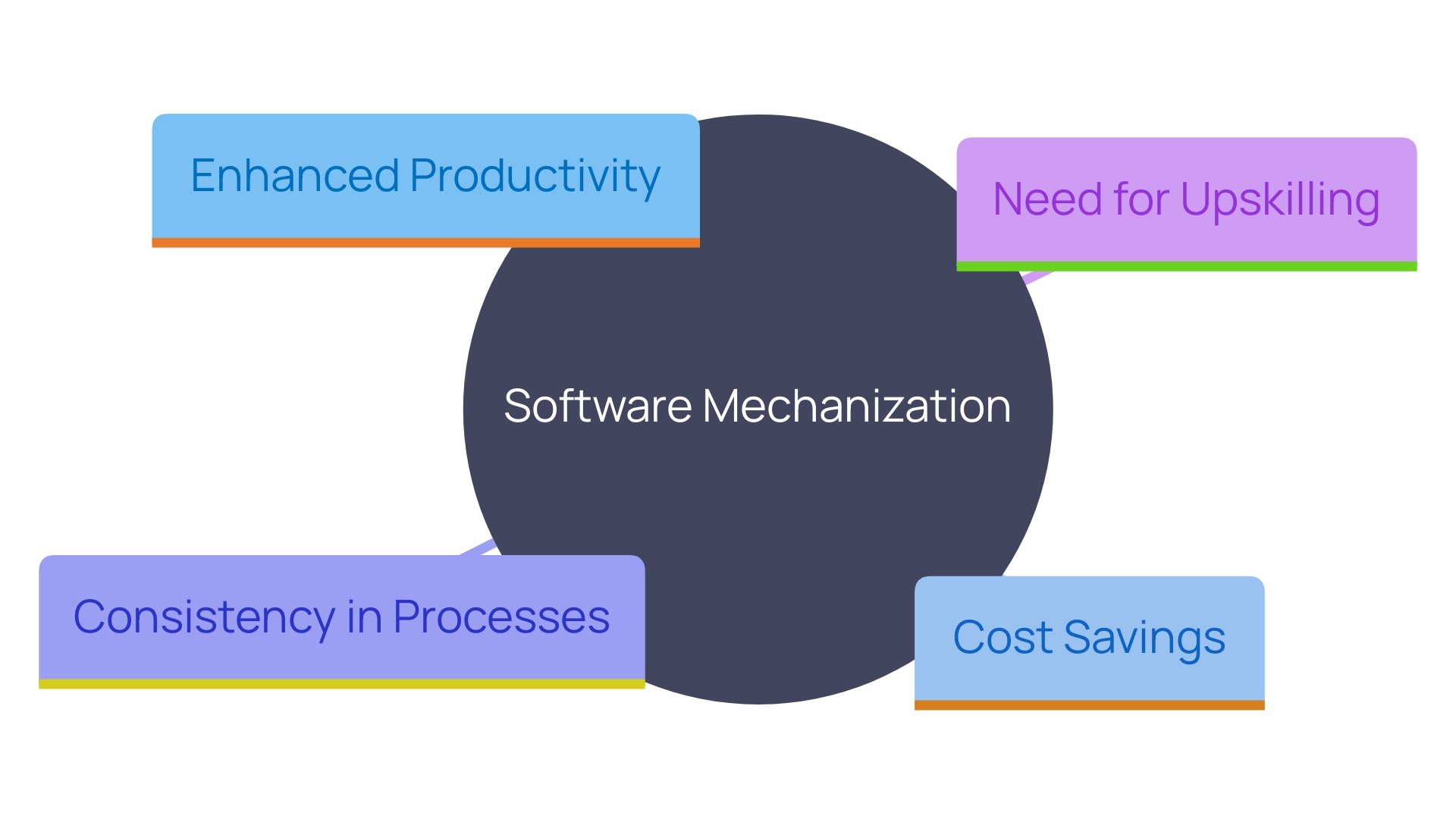
Challenges and Limitations of Software Automation
Despite its advantages, software automation comes with its fair share of challenges. One significant hurdle is employee resistance to change, especially from those accustomed to traditional processes. This resistance isn’t unusual, as the introduction of advanced innovations such as AI and robotics often sparks concerns about job security. However, a recent survey from MIT found that 60% of workers who interact with these technologies foresee positive impacts on their productivity, job satisfaction, and safety.
The initial execution of mechanization instruments also requires a significant commitment of time and resources. This was clear in the situation of the Mass General Brigham hospital system, which needed to hire developers and a process specialist to reorganize their workflow and create efficiency solutions. These instruments ultimately freed front-line finance personnel to engage in more valuable activities, illustrating that the immediate expenses can lead to long-term benefits.
Moreover, there’s the risk of over-automation, where automating too many processes can lead to inflexibility. A balanced approach is essential. Organizations must evaluate which activities truly gain from mechanization while steering clear of the drawbacks of overdependence on technology. Comprehending these constraints and strategically maneuvering through them is essential for the successful incorporation of technological tools.
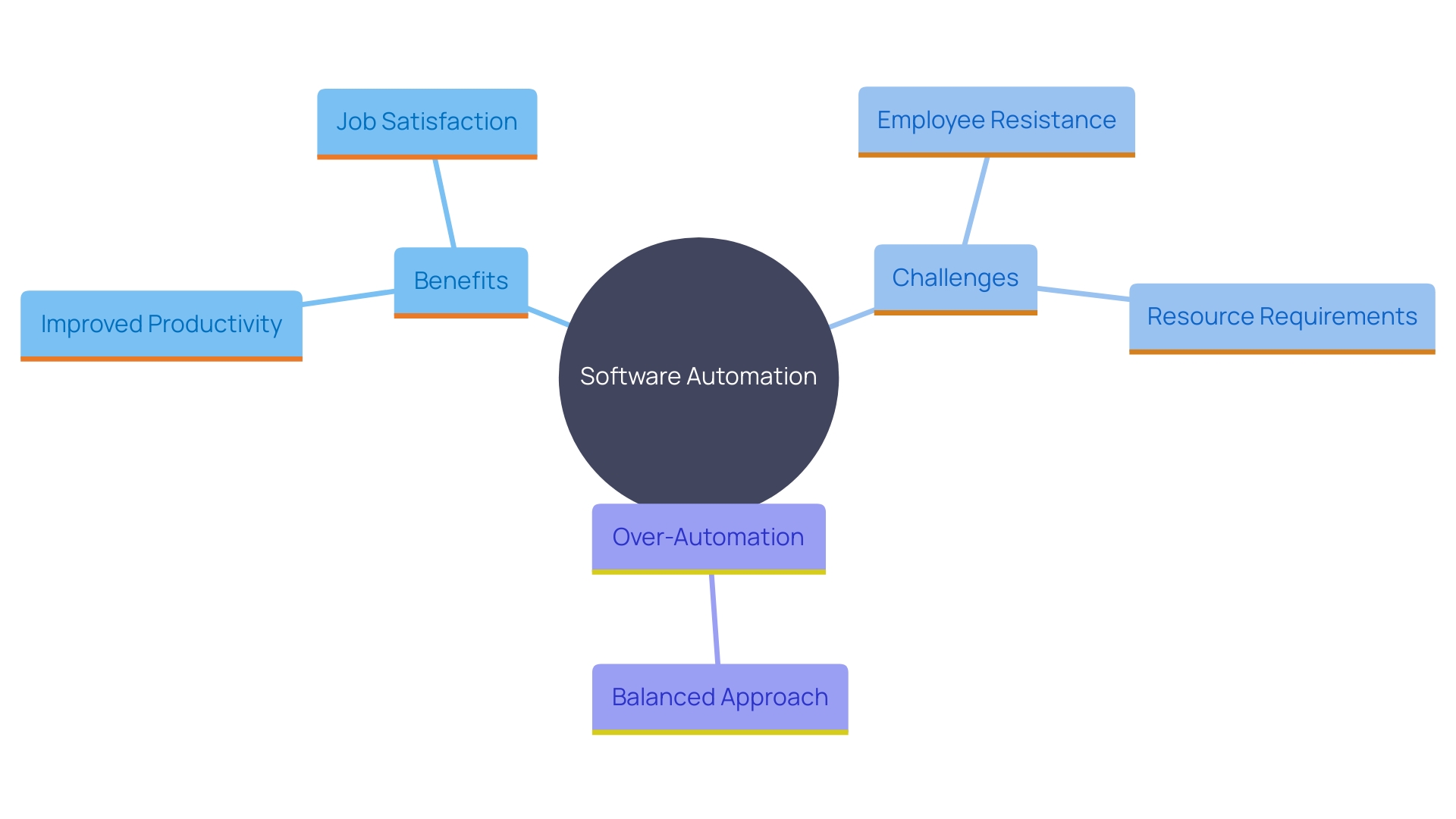
Real-World Applications of Software Automation
Software mechanization is revolutionizing industries by making processes quicker, more intelligent, and increasingly efficient. In the finance sector, for example, M&T Bank has adopted technology to maintain the highest level of security and compliance with stringent regulatory requirements. This transformation allows for efficient handling of sensitive data and transactions, significantly reducing the risk of security breaches and financial losses. In healthcare, the Mass General Brigham hospital system in Boston faced significant bottlenecks in managing provider information. By forming a team focused on automated processes, they created tools that simplified data gathering and structured information, resulting in more efficient workflows and enhanced service delivery. Manufacturing has also experienced considerable advantages from mechanization, with automated controls and monitoring systems enhancing production lines. ‘AI-driven mechanization is changing how work gets done, combining machine learning, natural language processing, computer vision, and robotics to automate tasks traditionally requiring human effort.’. Prompt acceptance of these advancements positions companies to lead in their sectors, fostering innovation and competitive edge.
Future of Software Automation
The future of software innovation is poised for remarkable growth as cutting-edge technologies continue to evolve. Artificial intelligence (AI) and machine learning (ML) are leading this transformation, making automation resources smarter and more adaptable. AI involves intelligent agents that enable computers to carry out activities with human levels of accuracy and intelligence. Key AI concepts relevant to software development include Machine Learning (ML), which uses data to forecast and make decisions, and Deep Learning, which uses deep neural networks to mimic the human brain’s capabilities.
Automation instruments enhanced by these innovations are already addressing intricate tasks with impressive effectiveness. For instance, deep learning algorithms are being used to develop chatbots, facial identification systems, and voice recognition applications. Natural Language Processing (NLP) enables computers to understand, manipulate, and generate natural human languages, making it the primary technology behind digital assistants like Siri and Alexa.
The rapid adoption and constant advancement of AI resources for developers highlight their transformative impact on the industry. According to a worldwide survey of 1,639 professionals and students in the field, nearly half (49%) of leaders believe advanced AI tools will result in efficiency gains or cost reductions, while 20% anticipate enhanced throughput or quicker time to market. This shift is not merely theoretical; AI-driven mechanization is already enhancing efficiency and operational agility in real-time decision-making processes.
As companies aim for improved efficiency, the need for creative mechanization solutions will only increase. The autonomous AI and autonomous agents market is expected to grow significantly, with revenue forecasts extending into billions of dollars. This burgeoning field is reshaping industries by enabling organizations to automate increasingly complex tasks and enhancing their operational capabilities. The future of software automation, driven by AI and ML, is not just promising; it is inevitable.
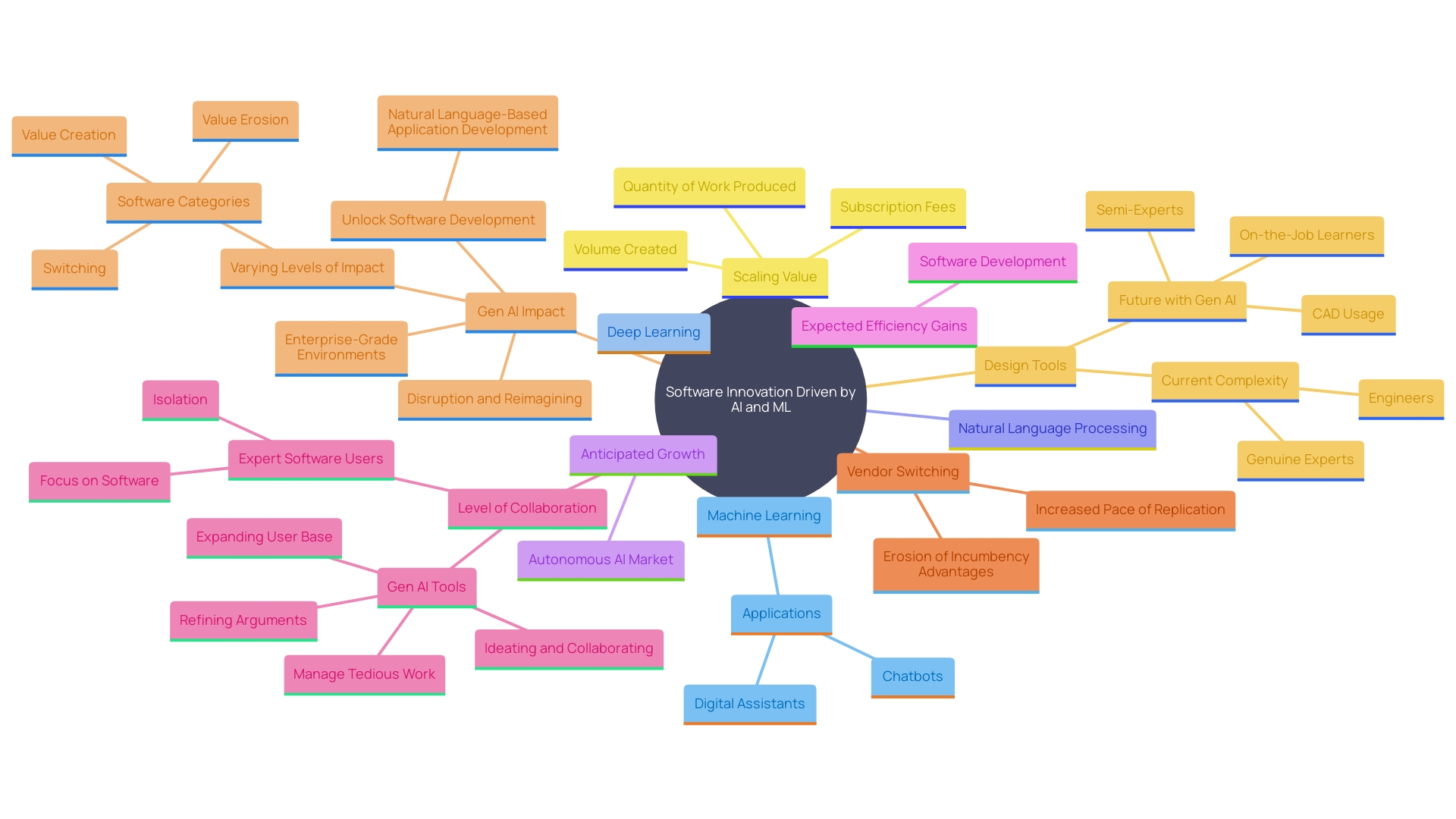
Conclusion
Software automation stands as a cornerstone in the evolution of business operations, offering a multitude of advantages that significantly enhance productivity and efficiency. By streamlining repetitive tasks through tools like Robotic Process Automation and AI-powered test automation, organizations can focus their human resources on strategic initiatives that add value. The evidence is clear: companies leveraging automation report faster task completion and substantial cost savings, illustrating its transformative potential across various sectors.
However, the journey to successful automation is not without challenges. Employee resistance and the initial investment in technology can pose hurdles. Addressing these concerns through effective change management and upskilling initiatives is essential to foster a culture of acceptance and innovation.
A balanced approach to automation, one that avoids over-reliance on technology, ensures that businesses can reap the benefits while maintaining flexibility in their operations.
Looking ahead, the future of software automation is poised for unprecedented growth, driven by advancements in artificial intelligence and machine learning. These technologies will not only enhance existing automation tools but will also enable the tackling of increasingly complex tasks with greater accuracy and efficiency. As organizations continue to embrace these innovations, the potential for enhanced operational capabilities and competitive advantage becomes ever more attainable.
In summary, the strategic implementation of software automation is crucial for organizations aiming to thrive in a rapidly changing business landscape. Emphasizing the importance of addressing challenges and leveraging future technologies will empower businesses to navigate this transformative journey successfully.

